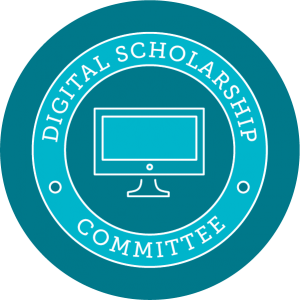 Registration for the Digital Frontiers 2017 Conference (#DF17UNT) is now open!
Join us for the largest and longest-running digital humanities conference in Texas, hosted here at the UNT campus on September 21-23, 2017. This year’s theme is Exploring the Edges, Pushing the Boundaries. The conference’s vision is to examine research and projects involving new newly-applied technologies concepts, processes, and methodologies; to reach out to new audiences and communities, especially the under served; to probe into efforts, both mainstream and on the margins, to achieve social justice via digital humanities resistance to the status quo; and to showcase practical applications of openly available tools and resources that foster investigations that may have been impossible or deemed unanswerable in the past.
This year’s sessions include topics such as:
This year’s keynote speakers are Stacie Williams speaking on the topic of Sustainable Digital Scholarship: Shrinking Our Footprint, Broadening Our Impact, and Jacqueline Wernimont, speaking on the topic of Counting the Dead: Quantum Media, and How We Come to Matter.
Registration is a non-refundable $75 for non-students and $40 for full-time graduate and undergraduate students. It includes access to all keynote and paper sessions, lunch both days of the conference, and attendance at the reception.
Join us this year for an exciting, eye-opening, and highly engaging conference!
Register here for DF17
Registration for the Digital Frontiers 2017 Conference (#DF17UNT) is now open!
Join us for the largest and longest-running digital humanities conference in Texas, hosted here at the UNT campus on September 21-23, 2017. This year’s theme is Exploring the Edges, Pushing the Boundaries. The conference’s vision is to examine research and projects involving new newly-applied technologies concepts, processes, and methodologies; to reach out to new audiences and communities, especially the under served; to probe into efforts, both mainstream and on the margins, to achieve social justice via digital humanities resistance to the status quo; and to showcase practical applications of openly available tools and resources that foster investigations that may have been impossible or deemed unanswerable in the past.
This year’s sessions include topics such as:
This year’s keynote speakers are Stacie Williams speaking on the topic of Sustainable Digital Scholarship: Shrinking Our Footprint, Broadening Our Impact, and Jacqueline Wernimont, speaking on the topic of Counting the Dead: Quantum Media, and How We Come to Matter.
Registration is a non-refundable $75 for non-students and $40 for full-time graduate and undergraduate students. It includes access to all keynote and paper sessions, lunch both days of the conference, and attendance at the reception.
Join us this year for an exciting, eye-opening, and highly engaging conference!
Register here for DF17
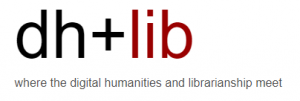 As the dh+lib Review editors worked behind the scenes this summer, they invited a few members of their community to step in as guest editors and share what they are reading and why the dh+lib audience might want to read it too.
UNT Libraries Repository Librarian Pamela Andrews (Digital Curation Unit) and Research Associate Professor Spencer Keralis (Public Services) both contributed their summer reading lists and commentary. They join librarians from University of Maryland, University of Michigan Library, the Sojourner Truth Library at SUNY New Paltz, and the Center for Electronic Publishing at the Bavarian State Library in Munich, Germany, but UNT is the only institution with two contributors.
Follow the links in their names to see their reading lists. You can Tweet your summer reading to @DH_UNT to share your own recommendations with the hashtag #summerreading!
Contributed by:
Maristella Feustle
Music Special Collections Librarian
Willis Conover’s correspondence in the mid-1930s with horror/sci-fi writer H.P. Lovecraft is well known in sci-fi circles thanks to the book Conover published in the 1970s, Lovecraft at Last. The original letters in Lovecraft’s own handwriting reside in the UNT Music Library’s Willis Conover Collection, alongside the hundreds of boxes of recordings and papers related to Conover’s career as a jazz broadcaster, for which he is best known.
As the dh+lib Review editors worked behind the scenes this summer, they invited a few members of their community to step in as guest editors and share what they are reading and why the dh+lib audience might want to read it too.
UNT Libraries Repository Librarian Pamela Andrews (Digital Curation Unit) and Research Associate Professor Spencer Keralis (Public Services) both contributed their summer reading lists and commentary. They join librarians from University of Maryland, University of Michigan Library, the Sojourner Truth Library at SUNY New Paltz, and the Center for Electronic Publishing at the Bavarian State Library in Munich, Germany, but UNT is the only institution with two contributors.
Follow the links in their names to see their reading lists. You can Tweet your summer reading to @DH_UNT to share your own recommendations with the hashtag #summerreading!
Contributed by:
Maristella Feustle
Music Special Collections Librarian
Willis Conover’s correspondence in the mid-1930s with horror/sci-fi writer H.P. Lovecraft is well known in sci-fi circles thanks to the book Conover published in the 1970s, Lovecraft at Last. The original letters in Lovecraft’s own handwriting reside in the UNT Music Library’s Willis Conover Collection, alongside the hundreds of boxes of recordings and papers related to Conover’s career as a jazz broadcaster, for which he is best known.
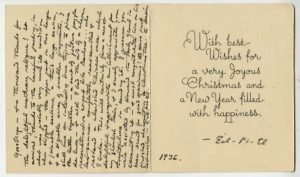
a Christmas card from H.P. Lovecraft to Willis Conover, 1936

Traditional technology refers to causes disclosing truth – such as a silversmith disclosing the truth of a chalice
People view and consume video games in a variety of ways. Some may play video games purely for their entertainment aspect and spend a few hours a week on Skyrim or Call of Duty. Some gamers appreciate the storytelling aspect of popular game plots and gravitate toward games with rich plots such as titles in the Legend of Zelda series or Final Fantasy. Others incorporate socialization and role-play into their gaming, using the games as a way to connect with people from around the world by taking on a virtual identity (Here is a beginner’s guide to role-play in the context of Star Wars). Still, others spend countless hours developing skills needed to become professional gamers in the field of eSports for titles such as Starcraft II, League of Legends, and Overwatch. eSports is a growing industry complete with global competitions, generous sponsorships for top-tier gamers, and even ESPN coverage.

Read more
 About zines
In the realm of publishing, the Xerox copier doesn’t get (ahem) a lot of press. This simple workhorse pales in comparison to the industrial machines used by major printing presses. Today, for those interested in self-publishing, the internet provides a handy medium for their desired content in the form of blogs and private websites. Flash back to the days before the internet, however, when communities whose numbers or interests couldn’t find mass-market appeal with print publishers, and the copy machine begins to show its true power as a medium for custom content within local, niche communities. Thus, the “zine” (pronounced “zeen”) was born: small, self-published, low-tech compilations of text and images.
Zines appealed especially to punk communities in the 1970’s, but that appeal applied just as much to queer communities, who felt the need to find and exercise a voice. Enabled by the advent of cheap photocopying, zines usually intended only a small circulation, and their creators gave them out free of charge or very cheaply. Experimental, fragmentary, sometimes even crude, these publications represent the social and economic margins of knowledge production. Zines come about through a desire to express oneself and one’s ideas, not necessarily to make money. Unsurprisingly mainstream audiences would normally be indifferent (at best) or hostile (at worst) to the sex, sexuality, and gender focused content of a queer zine; to queer audiences, however, zines provided a means for carving out local communities and serving their interests.
Read more
About zines
In the realm of publishing, the Xerox copier doesn’t get (ahem) a lot of press. This simple workhorse pales in comparison to the industrial machines used by major printing presses. Today, for those interested in self-publishing, the internet provides a handy medium for their desired content in the form of blogs and private websites. Flash back to the days before the internet, however, when communities whose numbers or interests couldn’t find mass-market appeal with print publishers, and the copy machine begins to show its true power as a medium for custom content within local, niche communities. Thus, the “zine” (pronounced “zeen”) was born: small, self-published, low-tech compilations of text and images.
Zines appealed especially to punk communities in the 1970’s, but that appeal applied just as much to queer communities, who felt the need to find and exercise a voice. Enabled by the advent of cheap photocopying, zines usually intended only a small circulation, and their creators gave them out free of charge or very cheaply. Experimental, fragmentary, sometimes even crude, these publications represent the social and economic margins of knowledge production. Zines come about through a desire to express oneself and one’s ideas, not necessarily to make money. Unsurprisingly mainstream audiences would normally be indifferent (at best) or hostile (at worst) to the sex, sexuality, and gender focused content of a queer zine; to queer audiences, however, zines provided a means for carving out local communities and serving their interests.
Read more

Wilhelm Dilthey, 1833-1911, German philosopher. Sought to apply the rigor of Kant’s philosophy to human experience. Made significant and lasting contributions to history, hermeneutics, and empirical philosophy.
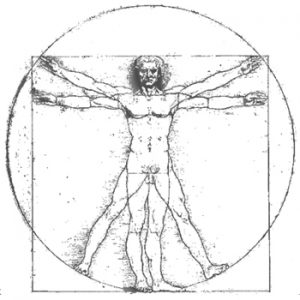 This is the first post in a series questioning general relationship between digital humanities and the sciences. Specifically, the main concern is whether, and to what extent, DH contributes to the scientification of the humanities. That is to say, does DH lead the humanities away from the qualitative and ineffable and toward the quantitative and numerable? Does DH pose new questions as to the study and integrity of the humanities? How might we begin to articulate the potential benefits and limitations of DH when investigating these questions?
This is an ongoing debate between the proponents and critics of DH. The purpose of this series will be to examine the question of the relationship of the human sciences with the natural sciences, and to see how technology and the digitization of knowledge affects that relationship. Such a survey will lead, in part one, to a brief examination of the original distinction between the natural and human sciences, and then, in part two, to the question of technology as applied to human knowledge. Part three will focus on the contemporary relationship between Natural and Human sciences and how DH arises from that relationship.
A series of short blog posts is, of course, inadequate to resolve these big questions with any satisfaction. The purpose of this series is, instead, to raise the questions and begin to search for resources in addressing them. Relevant discussion comes from topics such as hermeneutics and philosophy, but touches on nearly every area of humanistic research. The question is as historical as it is philosophical, and we first have to question how we came to view the natural and human sciences as separate, discrete spheres of knowledge altogether.
After being on hiatus for a few years, UNT Comic Studies made a grand return in Spring 2017! Now hosted by the UNT Libraries, the Comic Studies Project invited poet, cartoonist, librarian, and author Sommer Browning to speak about Comics as Poetry for a rejuvenating restart to the program. During the webinar, people listened to the conversation both physically on the 2nd floor of the Willis Library and remotely for people who wanted to join in the conversation at a distance.
This is the first post in a series questioning general relationship between digital humanities and the sciences. Specifically, the main concern is whether, and to what extent, DH contributes to the scientification of the humanities. That is to say, does DH lead the humanities away from the qualitative and ineffable and toward the quantitative and numerable? Does DH pose new questions as to the study and integrity of the humanities? How might we begin to articulate the potential benefits and limitations of DH when investigating these questions?
This is an ongoing debate between the proponents and critics of DH. The purpose of this series will be to examine the question of the relationship of the human sciences with the natural sciences, and to see how technology and the digitization of knowledge affects that relationship. Such a survey will lead, in part one, to a brief examination of the original distinction between the natural and human sciences, and then, in part two, to the question of technology as applied to human knowledge. Part three will focus on the contemporary relationship between Natural and Human sciences and how DH arises from that relationship.
A series of short blog posts is, of course, inadequate to resolve these big questions with any satisfaction. The purpose of this series is, instead, to raise the questions and begin to search for resources in addressing them. Relevant discussion comes from topics such as hermeneutics and philosophy, but touches on nearly every area of humanistic research. The question is as historical as it is philosophical, and we first have to question how we came to view the natural and human sciences as separate, discrete spheres of knowledge altogether.
After being on hiatus for a few years, UNT Comic Studies made a grand return in Spring 2017! Now hosted by the UNT Libraries, the Comic Studies Project invited poet, cartoonist, librarian, and author Sommer Browning to speak about Comics as Poetry for a rejuvenating restart to the program. During the webinar, people listened to the conversation both physically on the 2nd floor of the Willis Library and remotely for people who wanted to join in the conversation at a distance.

Read more
RAWGraphs offers hexagonal binning as an option for representing dispersions in datasets with an exceptionally large number of data points. This visualization visually clusters the most populated areas on a gridded surface and assigns a color based on the number of points in the region.
This example uses a public data set from Kaggle of data from 5000+ movies on IMDB. The x-axis shows IMDb movie ratings, and the y-axis displays gross revenue. Because there are so many data points in this set, it may be difficult to visualize the data in a clear and coherent way. However, hexagonal binning simplifies the data by clustering and color-coding it.
After setting up the visualization, this is what RAW gave me:
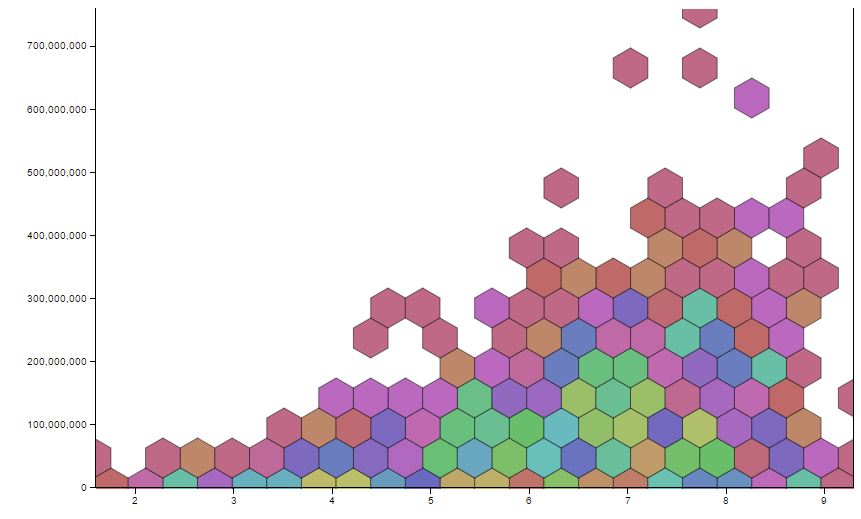 Read more
Read more
 Registration for the Digital Frontiers 2017 Conference (#DF17UNT) is now open!
Join us for the largest and longest-running digital humanities conference in Texas, hosted here at the UNT campus on September 21-23, 2017. This year’s theme is Exploring the Edges, Pushing the Boundaries. The conference’s vision is to examine research and projects involving new newly-applied technologies concepts, processes, and methodologies; to reach out to new audiences and communities, especially the under served; to probe into efforts, both mainstream and on the margins, to achieve social justice via digital humanities resistance to the status quo; and to showcase practical applications of openly available tools and resources that foster investigations that may have been impossible or deemed unanswerable in the past.
This year’s sessions include topics such as:
Registration for the Digital Frontiers 2017 Conference (#DF17UNT) is now open!
Join us for the largest and longest-running digital humanities conference in Texas, hosted here at the UNT campus on September 21-23, 2017. This year’s theme is Exploring the Edges, Pushing the Boundaries. The conference’s vision is to examine research and projects involving new newly-applied technologies concepts, processes, and methodologies; to reach out to new audiences and communities, especially the under served; to probe into efforts, both mainstream and on the margins, to achieve social justice via digital humanities resistance to the status quo; and to showcase practical applications of openly available tools and resources that foster investigations that may have been impossible or deemed unanswerable in the past.
This year’s sessions include topics such as:


 As the dh+lib Review editors worked behind the scenes this summer, they invited a few members of their community to step in as guest editors and share what they are reading and why the dh+lib audience might want to read it too.
UNT Libraries Repository Librarian
As the dh+lib Review editors worked behind the scenes this summer, they invited a few members of their community to step in as guest editors and share what they are reading and why the dh+lib audience might want to read it too.
UNT Libraries Repository Librarian 


 About zines
In the realm of publishing, the Xerox copier doesn’t get (ahem) a lot of press. This simple workhorse pales in comparison to the industrial machines used by major printing presses. Today, for those interested in self-publishing, the internet provides a handy medium for their desired content in the form of blogs and private websites. Flash back to the days before the internet, however, when communities whose numbers or interests couldn’t find mass-market appeal with print publishers, and the copy machine begins to show its true power as a medium for custom content within local, niche communities. Thus, the “zine” (pronounced “zeen”) was born: small, self-published, low-tech compilations of text and images.
Zines appealed especially to punk communities in the 1970’s, but that appeal applied just as much to queer communities, who felt the need to find and exercise a voice. Enabled by the advent of cheap photocopying, zines usually intended only a small circulation, and their creators gave them out free of charge or very cheaply. Experimental, fragmentary, sometimes even crude, these publications represent the social and economic margins of knowledge production. Zines come about through a desire to express oneself and one’s ideas, not necessarily to make money. Unsurprisingly mainstream audiences would normally be indifferent (at best) or hostile (at worst) to the sex, sexuality, and gender focused content of a queer zine; to queer audiences, however, zines provided a means for carving out local communities and serving their interests.
About zines
In the realm of publishing, the Xerox copier doesn’t get (ahem) a lot of press. This simple workhorse pales in comparison to the industrial machines used by major printing presses. Today, for those interested in self-publishing, the internet provides a handy medium for their desired content in the form of blogs and private websites. Flash back to the days before the internet, however, when communities whose numbers or interests couldn’t find mass-market appeal with print publishers, and the copy machine begins to show its true power as a medium for custom content within local, niche communities. Thus, the “zine” (pronounced “zeen”) was born: small, self-published, low-tech compilations of text and images.
Zines appealed especially to punk communities in the 1970’s, but that appeal applied just as much to queer communities, who felt the need to find and exercise a voice. Enabled by the advent of cheap photocopying, zines usually intended only a small circulation, and their creators gave them out free of charge or very cheaply. Experimental, fragmentary, sometimes even crude, these publications represent the social and economic margins of knowledge production. Zines come about through a desire to express oneself and one’s ideas, not necessarily to make money. Unsurprisingly mainstream audiences would normally be indifferent (at best) or hostile (at worst) to the sex, sexuality, and gender focused content of a queer zine; to queer audiences, however, zines provided a means for carving out local communities and serving their interests.

 This is the first post in a series questioning general relationship between digital humanities and the sciences. Specifically, the main concern is whether, and to what extent, DH contributes to the scientification of the humanities. That is to say, does DH lead the humanities away from the qualitative and ineffable and toward the quantitative and numerable? Does DH pose new questions as to the study and integrity of the humanities? How might we begin to articulate the potential benefits and limitations of DH when investigating these questions?
This is an ongoing debate between the proponents and critics of DH. The purpose of this series will be to examine the question of the relationship of the human sciences with the natural sciences, and to see how technology and the digitization of knowledge affects that relationship. Such a survey will lead, in part one, to a brief examination of the original distinction between the natural and human sciences, and then, in part two, to the question of technology as applied to human knowledge. Part three will focus on the contemporary relationship between Natural and Human sciences and how DH arises from that relationship.
A series of short blog posts is, of course, inadequate to resolve these big questions with any satisfaction. The purpose of this series is, instead, to raise the questions and begin to search for resources in addressing them. Relevant discussion comes from topics such as hermeneutics and philosophy, but touches on nearly every area of humanistic research. The question is as historical as it is philosophical, and we first have to question how we came to view the natural and human sciences as separate, discrete spheres of knowledge altogether.
This is the first post in a series questioning general relationship between digital humanities and the sciences. Specifically, the main concern is whether, and to what extent, DH contributes to the scientification of the humanities. That is to say, does DH lead the humanities away from the qualitative and ineffable and toward the quantitative and numerable? Does DH pose new questions as to the study and integrity of the humanities? How might we begin to articulate the potential benefits and limitations of DH when investigating these questions?
This is an ongoing debate between the proponents and critics of DH. The purpose of this series will be to examine the question of the relationship of the human sciences with the natural sciences, and to see how technology and the digitization of knowledge affects that relationship. Such a survey will lead, in part one, to a brief examination of the original distinction between the natural and human sciences, and then, in part two, to the question of technology as applied to human knowledge. Part three will focus on the contemporary relationship between Natural and Human sciences and how DH arises from that relationship.
A series of short blog posts is, of course, inadequate to resolve these big questions with any satisfaction. The purpose of this series is, instead, to raise the questions and begin to search for resources in addressing them. Relevant discussion comes from topics such as hermeneutics and philosophy, but touches on nearly every area of humanistic research. The question is as historical as it is philosophical, and we first have to question how we came to view the natural and human sciences as separate, discrete spheres of knowledge altogether. 

